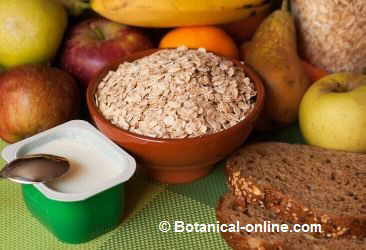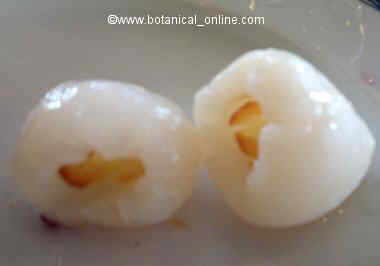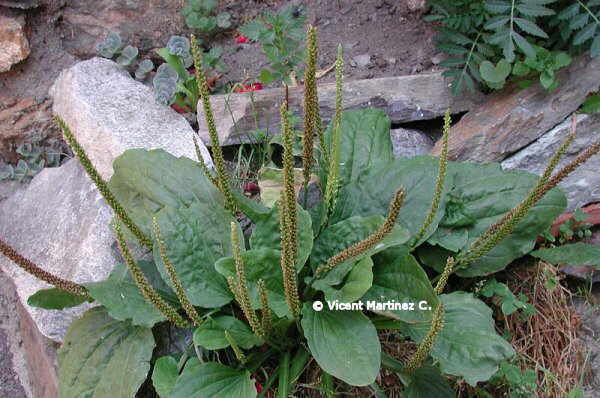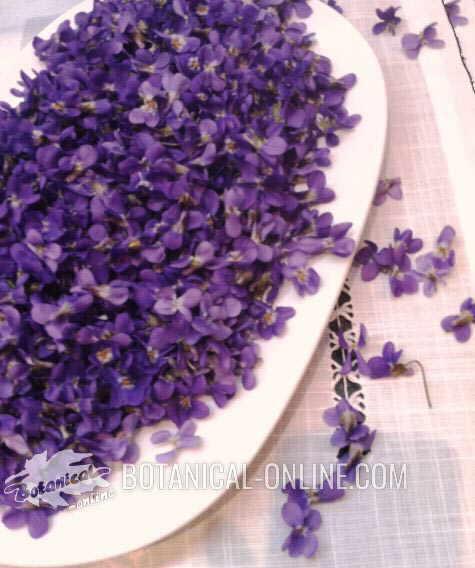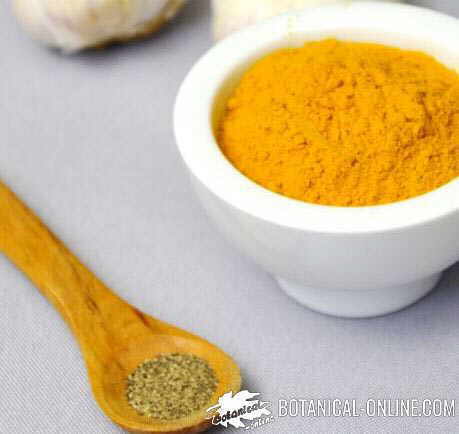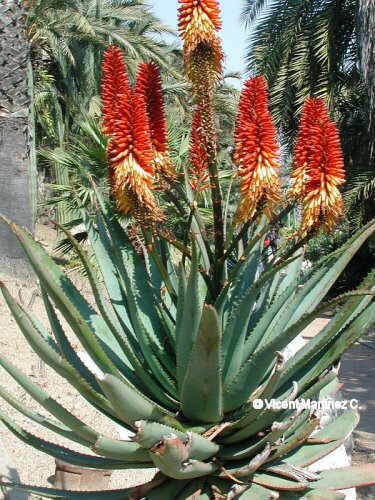Contents
Types of daisies
What is a daisy plant?
A daisy is an herbaceous plant of the Compositae family,(Asteraceae) characterized by a yellow flower bud.
The real daisy flower comes from plants of the genus Bellis spp.
All daisies from Bellis gender come from Europe, North Africa and Turkey, and have become naturalized in many regions of Asia Minor, New Zealand and North America, initially exported as ornamentals.
Currently, these plants are a common weed of lawns and turf.
Daisy botanical aspects
Actually, a daisy is not a flower. It belongs to the Compositae family, and as this name implies, it is composed of many tiny flowers, arranged in a floral head.
So, a daisy is an inflorescence composed of tiny yellow flowers, and surrounded by a white, pink or red ligules that look like petals.
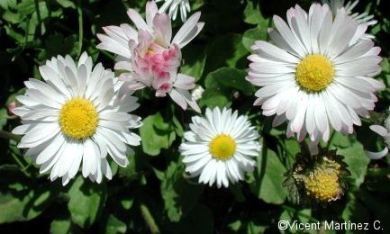
In the image: Common daisy (Bellis perennis)
Main real daisies
Only those plants of the Asteraceae or Compositae family, belonging to the genus Bellis, should be considered as authentic daisies. They are perennial plants that grow in their natural state in Europe, North Africa and Turkey
There are 10 species and two subspecies of Bellis, the best known being the common daisy (Bellis perennis), which is the only one that is grown as an ornamental plant.
All of them are plants characterized by having flowers that start from a single stem and by having the oval or spatula-shaped leaves, grouped in basal rosettes.
The word Bellis comes from the Latin “Bellus”, which means beautiful, charming or pretty. There are other theories about the origin of this word, although they are less accepted. The most defended against the previous one is the that one that states that it comes from “Bellum”, which means war, since it is a plant with healing properties of wounds.
In English, the common name daisy, is a corrupt form of the expression “day’s eye”. This name is due to the fact that the daisies close the flowers at night and open them when the sun rises.
The plants of the genus Bellis are the following:
- Annual daisy (Bellis annua L.) small perennial plant, very common in Europe and Asia Minor. It blooms in spring. It is a common weed of meadows and fields
- Bellis azorica Hochst. : Azores endemic
- Bellis bernardii Boiss. & Reut: Corsica endemic
- Bellis caerulescens (Cosson) Coss. ex Ball: Morocco endemic species. In Atlas mountains, between 1000 and 3500 meters.
- Bellis dubia Spreng:
- Bellis hyrcanica Woronow: Azerbaijan endemic.
- Bellis longifolia Boiss. & Heldr.: Cretre endemic. In rocky mountains between 1200 and 2000 meters
- Common daisy (Bellis perennis L.) small perennial plant, very common in Europe and Asia Minor. It blooms in spring. It is a common weed of meadows and fields.
- Bellis rotundifolia (Desf.) Boiss. & Reut.: South-western Spain and north-western Africa endemic
- Southern Daisy (Bellis sylvestris Cirillo): wild daisy, vivacious, which differs by having leaves and flowers larger than their previous two.
*Related information: Varieties of daisies
Chrysanthemums
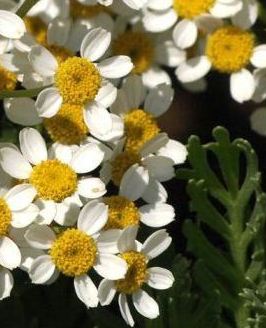
Sticking daisy (Tanacetum ferulaceum)
Some plants belonging to chrysanthemums (Chrysanthemum spp.) are also commonly called daisies.
Chrysanthemums are a genus of flowers from Asia, from the same family than Bellis, the Compositae family. This genus includes about 40 species.
In some classifications, many plants assigned to the genus Chrysanthemum spp. have been divided among other genres, such as: Argyranthemum, Dendranthema, Leucanthemum and Tanacetum.
It is for this reason that many of these plants have dual scientific name.
– Oxeye Daisy (Leucanthemum vulgare = Chrysanthemum Leucanthemum) It is distinguished by its large flowers, white petals and bright yellow flower buds.
This is usually the most common in fields and roads. Although commonly it is called Daisy, this is actually a species of chrysanthemum.
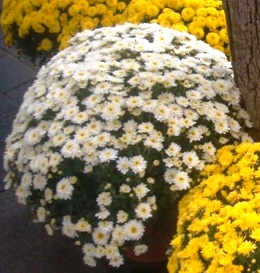
oxeye daisy (Chrysanthemum leucanthemum)
– Shasta Daisy (Chrysanthemum leucanthemum = Leucanthemum maximum): perennial plant with flowers reminiscent of daisies, with white petals and yellow flower buds.
Flowers large, greater than 5 cm. in diameter.
– Canary Daisy (Chrysanthemum frutescens = Argyranthemum frutescens): species from the Canary Islands, currently distributed through the gardens of Europe.
It blooms throughout the year.
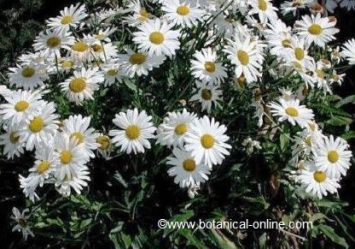
Chrysanthemum maximum or Shasta Daisy (Leucanthemum maximum)
– Garland daisy (Chrysanthemum coronarium = Glebionis coronaria): white on the periphery of the petals and golden yellow in the part closest to the disc floret.
Common in the margins of roads and Mediterranean cornfields.
– Corn daisy (Chrysanthemum segetum = Glebionis segetum): also known as corn marigold.
Annual plant very common in dry fields and harvests (grain fields), numerous branches topped with golden flower heads.
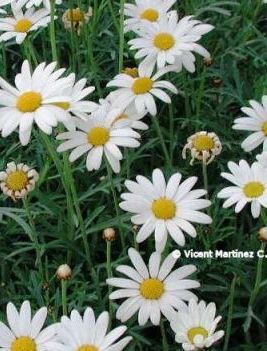
Canary daisy (Chrysanthemum frutescens)
Other plants similar to daisies
- Chamomile (Matricaria chamomilla): popular medicinal plant with flowers that resemble daisies.
- Corn chamomile or mayweed (Anthemis arvensis): annual plant with white flowers reminiscent of daisies. Outstanding floral heads heads 23cm. in diameter.
- Boston daisy (Anthemis tinctoria) herbaceous plant with golden flowers that grows wild in the fields. It is widely used in decoration of bouquets.
- Stinking chamomile (Anthemis cotula): field flower look similar to chamomile.
- Marigold (Calendula officinalis): colorful and beautiful orangeyellow flower. Often this flower is often confused with some kind of chrysanthemum.
- Blueeyed African daisy (Arctotis stoechadifolia): although it shares its name with daisy, it has very different characteristics.
- European Michaelmas daisy (Aster amellus): flower reminiscent of daisy, but in the genus Aster. Popular gardening flower. It can have different colors depending on variety.
![]() More information about daisy.
More information about daisy.

